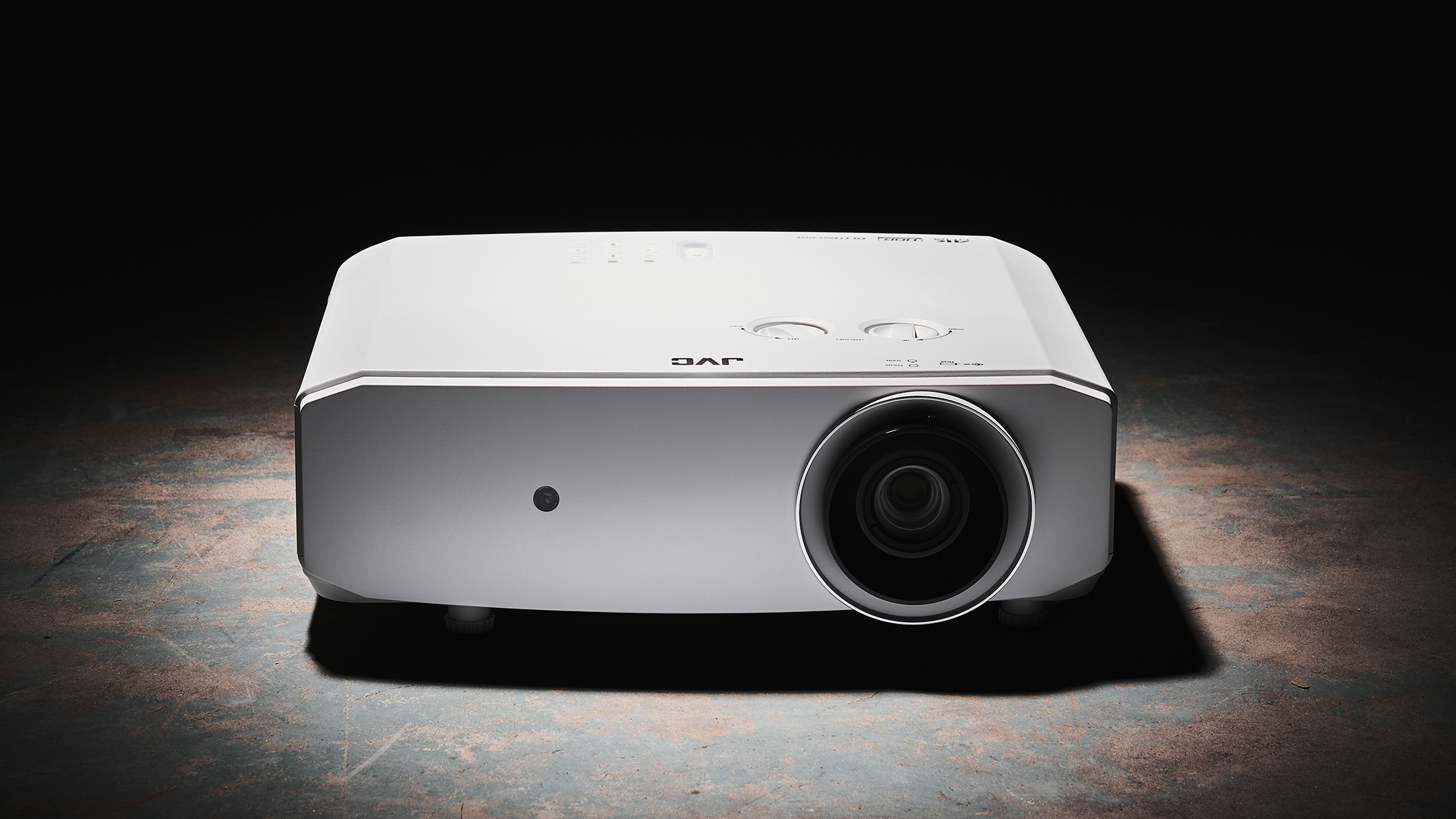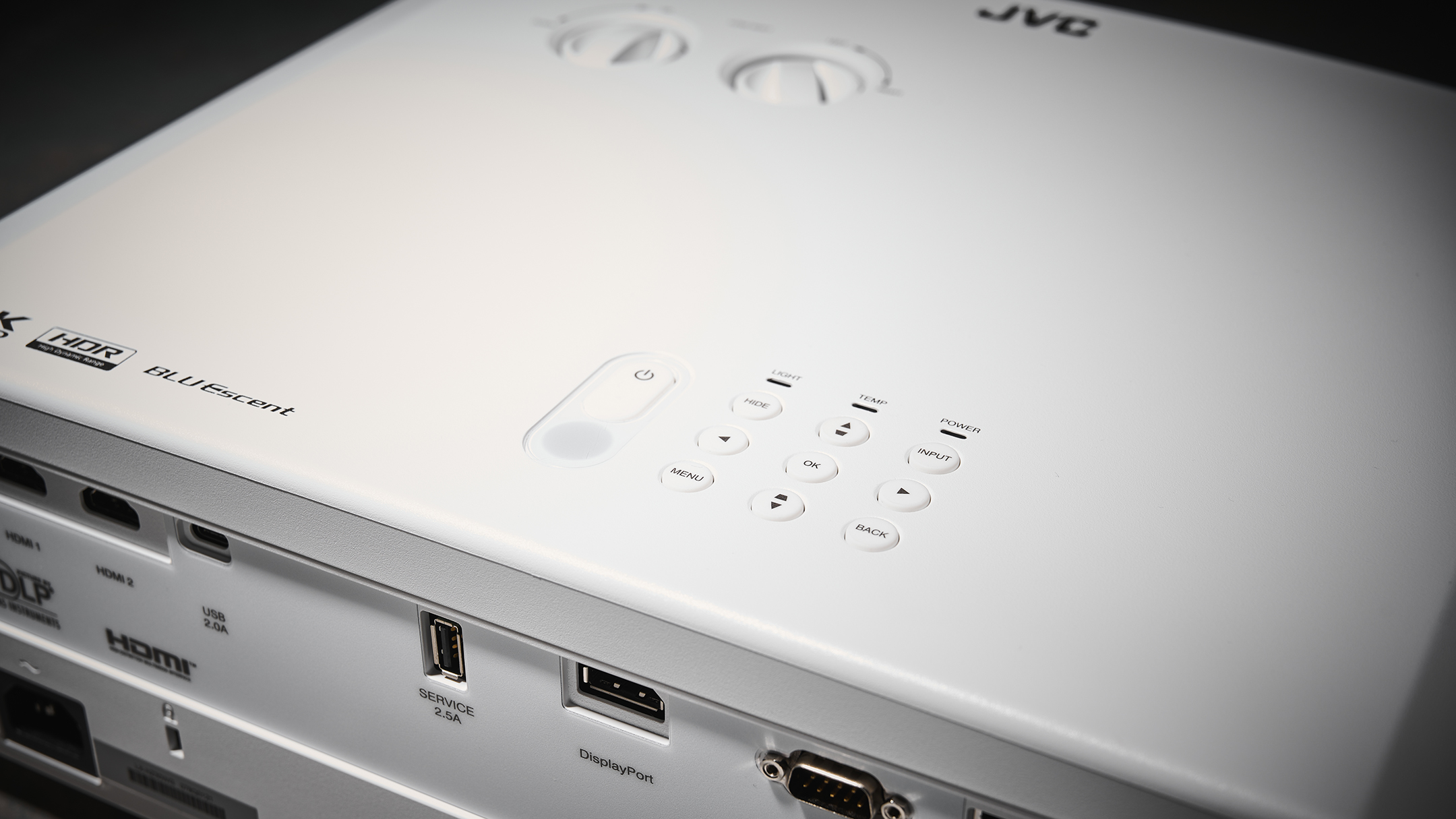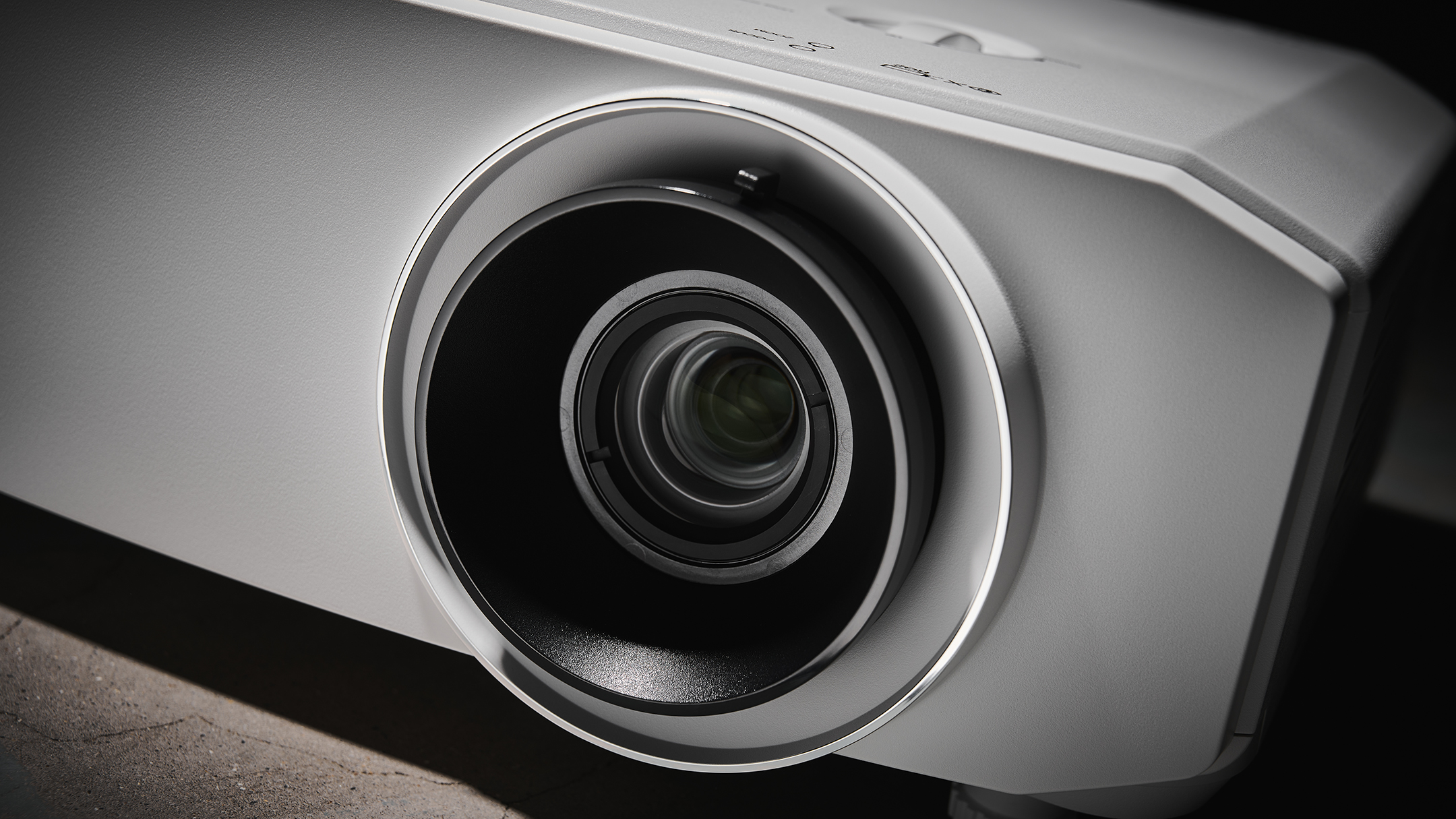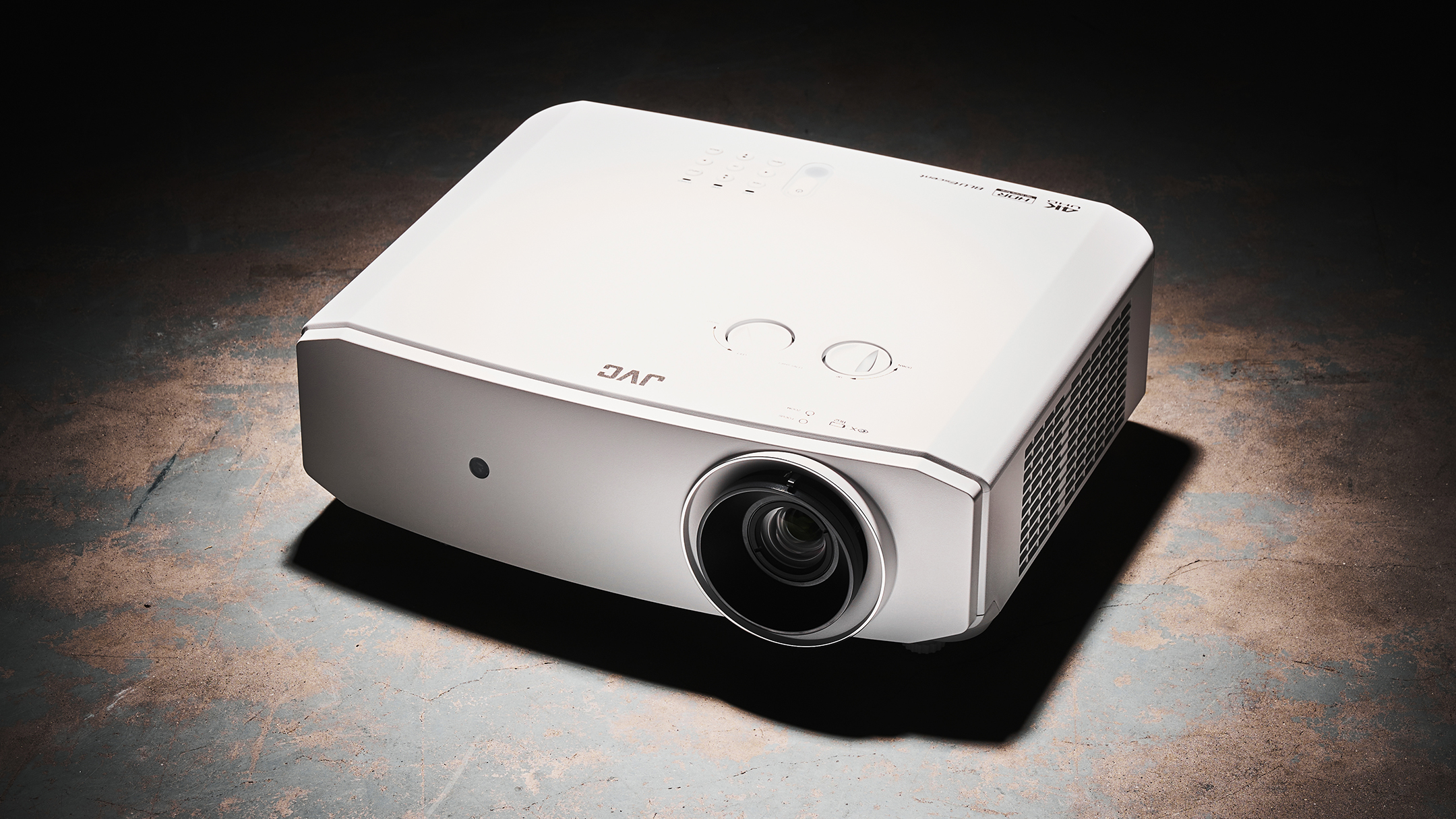JVC LX-NZ30 review: premium projection without as premium a price
JVC’s entry-level beamer promises the brand’s big-screen expertise at a more affordable price


The JVC LX-NZ30 is a very bright laser-powered digital light processing (DLP) projector that benefits from the brand’s big-screen know-how to deliver an impressive high dynamic range (HDR) performance. While this will undoubtedly please discerning movie fans, an incredibly low input lag also makes this beamer a great choice for gamers.
-
+
Sharp and detailed 4K images
-
+
Bright, long-life laser light source
-
+
Low latency for a projector
-
-
Rainbows could be an issue
-
-
No HDMI 2.1 inputs
-
-
No 3D support
Why you can trust T3

The JVC LZ-NZ30 is a 4K projector that swaps the brand’s usual D-ILA tech (that's 'Direct-Drive Image Light Amplification', a JVC technology, if you don't love an acronym) for single-chip DLP (digital light processing – it really is all about the acronyms).
The LZ-NZ30 also includes a BLU-Escent laser light source and proprietary HDR Auto Tone Mapping, as found on JVC's higher-end models. As a result, it promises projection prowess without as premium a price tag – putting it in contention as one of the best projectors you could buy.
JVC LX-NZ30 REVIEW: PRICE & Availability
The JVC LX-NZ30 is priced at £3,799, which is two grand less than the higher-spec JVC model above it. The widget below will show you pricing in your region.
JVC LX-NZ30 REVIEW: DESIGN & CONNECTIONS
The JVC LX-NZ30 uses a smaller and lighter chassis compared to its more expensive siblings, but that makes installation considerably easier. It’s nicely designed, offering a choice of black or white finishes – the latter is likely to prove popular with anyone looking for a lifestyle-friendly beamer.
At the rear you’ll find two HDMI 2.0 inputs, a USB-C port, a USB-A power supply, a DisplayPort (handy for PCs), RS-232 and LAN connectors for control, and a 12V trigger for activating a motorised screen. The lack of HDMI 2.1 means this projector doesn’t support HDR10+ or 4K/120Hz refresh rates in the highest resolution.
JVC LX-NZ30 REVIEW: FEATURES

The JVC LX-NZ30 displays 4K resolution, and uses a BLU-Escent laser light source that delivers a blistering 3,300 lumens of brightness, with a lifespan of 30,000 hours. Longevity isn’t the only benefit of laser, with added consistency and none of the dimming associated with traditional bulbs.
The NZ30 supports high dynamic range in the form of HDR10 and HLG (hybrid log-gamma), and includes JVC’s Auto Tone Mapping that adjusts the HDR experience based on metadata included in the content, ensuring the projector delivers deep blacks, rich colours, and detailed highlights.
Get all the latest news, reviews, deals and buying guides on gorgeous tech, home and active products from the T3 experts
The JVC is also a great choice for gamers thanks to a low-latency mode that brings the input lag down to a blink-and-you-miss-it 25ms. The HDMI input limitations may preclude 4K/120Hz gaming, but this beamer can handle 240Hz frame rates at 1080p, which is popular with PC gamers.
JVC LX-NZ30 REVIEW: PERFORMANCE

The JVC LX-NZ30 immediately impresses with its bright and vibrant big-screen pictures. The sharpness of single-chip DLP and the resolution of 4K combine to produce wonderfully detailed images, while the upscaling and processing benefit from JVC’s decades of projector expertise.
The laser light source is extremely bright, and there’s certainly sufficient luminance to produce images that dazzle, whether they're standard dynamic range (SDR) or high dynamic range (HDR). The latter is excellent thanks to JVC’s Auto Tone Mapping feature, which maximises the visual impact of HDR content on the biggest screens.
DLP beamers are especially adept when it comes to motion handling, and the NZ30 is no exception. There’s a buttery smoothness to movement, with movies retaining a movie-like quality while also appearing free of judder and other artefacts that affect less capable display technologies.
Conversely, DLP projectors struggle when it comes to blacks, and again the JVC is no exception, robbing the contrast of some of its impact. While certain people might see colour fringing (rainbows), in all other respects the NZ30 is a cracking projector for movie fans and keen gamers.
JVC LX-NZ30 REVIEW: VERDICT

The JVC LX-NZ30 is an accomplished projector that delivers bright, colourful, and detailed 4K images. The motion handling is also excellent, the laser light source guarantees decades of use, and sophisticated proprietary tone-mapping results in HDR pictures that retain plenty of visual pop.
An exceptionally low input lag is sure to delight gamers, although the lack of HDMI inputs means no playing at 4K/120Hz, and there’s no HDR10+ or 3D support either.
Overall, however, this refined beamer has plenty to recommend, delivering gorgeous big-screen fun and super-smooth gaming.
Also consider
The JVC's asking price is comparable to its near competition, such as the Optoma UHZ65LV (currently retailing for £3,499) or the Epson EH-LS11000W (an even more reasonable £3,149). The Epson has the biggest features and lowest price, which will make it the best choice for most people.

Steve Withers is a professional calibrator and freelance journalist who regularly contributes to T3, reviewing audio and video products, and writing articles. Steve has been writing about audio and video products for over ten years and, along with T3, he also contributes to TechRadar, Trusted Reviews, Expert Reviews, AVForums, Pocket-lint, Home Cinema Choice, and Wired. Steve is Level 2 certified with THX, the Imaging Science Foundation (ISF) and the Home Acoustics Alliance (HAA). As such, he remains abreast of all AV technology developments and the latest industry standards as we transition into a new era in home video and audio.